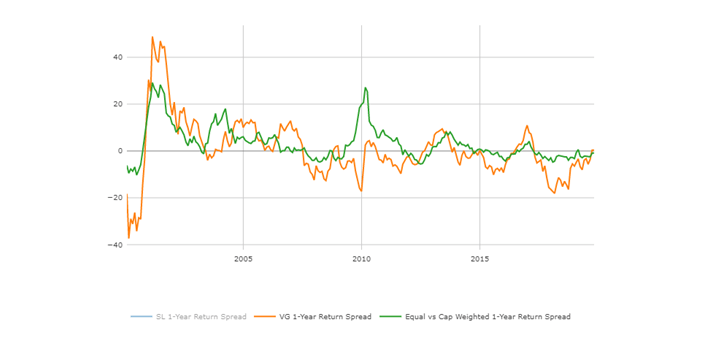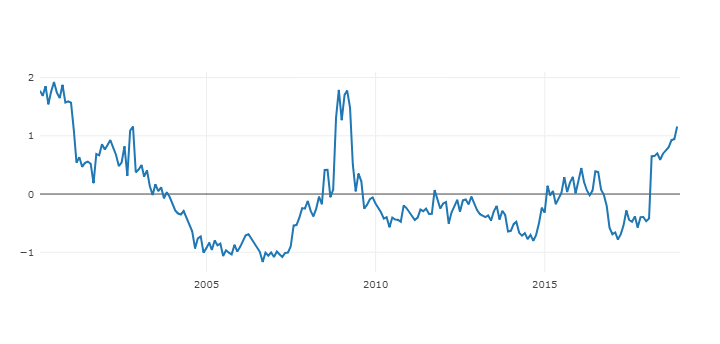Market Overview
It is all about the virus at the moment. Investor sentiment has improved since last month. The next chapter in the coronavirus story will depend on how and when the economy can re-open. Much depends on developing treatments and effectively implementing policy to prevent the spread of the virus. If the economy can get on track more quickly, that would obviously be encouraging for investors. Stay positive and keep long-term prospective!
US Economics and The Coronavirus
Since mid-March, the lockdowns and social distancing brought the first quarterly contraction of the economy since last recession, which was to be expected. The second quarter is going to be worse with lockdowns continuing into May. However, at the moment the most important question is not what we see in the rear-view mirror, but how quickly coronavirus treatments are effected and approved for a wide use, and when consumers can confidently get back to their normal lives. From our conversations with medical experts, there is hope for new therapeutics to reduce the worst outcomes of the virus and make it more like the flu, way before a vaccine is available. There are a few existing drugs being tested and results are very encouraging. Since we find ourselves in a recession, we need to remember that the stock market is a leading indicator and it usually starts going up before the economy bottoms out. Looking ahead, the road to recovery could be bumpy, as the economic data will be grim for some time. However, we are confident that the U.S. economy and financial markets will recover, as they always have, historically.
Global Economics
The COVID-19 shock is generating a synchronized global downturn that is worse than that of the global financial crisis. The latest surveys suggest the economic contraction intensified in April. While JP Morgan forecasts global GDP to drop at a record 22% pace in 2Q20, gauging the magnitude is challenging. Regional performance data could be unusually divergent as China bounces and the rest of the world collapses. However, unprecedented levels of stimulus coming from Federal Reserve and other central banks make us hopeful that the second half of the year should see economic recovery across the globe, assuming we do not get a second wave of the virus.
The market is defined by expectations for the future, not the past
As the market rallied significantly over the last two weeks, Professor Siegel of Wharton Business School emphasizes that over 90% of the value of stocks comes from earnings more than 1-year in the future. This is why Professor Siegel does not think the market over-shot from the bottom. Rather, he is confident the market will look past this year’s weak data to the successful re-opening of the economy next year. Therapeutics, testing, and case lows are the key drivers of the equity market now.
Stock Market Opportunities
Valuation spreads have reached 3 standard deviations above normal levels for the first time on Signet’s record. Large Cap Growth/Small Cap Value YTD return spreads jumped above 30% (see charts below). All these facts clearly point to how mispriced the stock market is at the moment. We continue seeing an opportunity to gain exposure to the small cap area. We also think Value is in a great position relative to Growth, which had a very prolonged period of domination for the most part of the last decade. On the sector front, our proprietary forecast blending Macro and Micro indicators, points to a very interesting combination with Consumer Staples (defensive) and Industrials and IT (cyclical) forecast to outperform. Our models “learned” from the previous major crises (IT dot com bubble and great recession). Our stock scores, influenced by macro forecasts, change the weights of major factor groups (Valuation, Yield, Growth, Momentum, Safety and Profitability) and follow similar patterns to the above-mentioned crises. Judging by where we are and what models tell us – we are could see a turning point in the markets. It is impossible to tell when this exact point is going to be, but the general upward direction for a one year plus horizon is unmistakable, in our opinion.
Bonds in Asset Allocation Strategies
Current conditions are tough for bond investors. Yields are historically low to negative. Bond index investors are taking elevated levels of interest rate risk, as well. The duration of the aggregate bond index has almost never been higher at over 6 years, while yields are near all-time lows. This is a dangerous combination. Caution is warranted now. We think investors can benefit from a flexible and nimble investment mandate that can invest across a wide range of strategies and sectors, including less traditional parts of the market. We are prepared to invest a portion of bond allocations with flexible, actively-managed bond strategies. When rates collapse like in 2020, these managers often fail to keep pace with longer-duration benchmarks. However, over a full credit cycle, we prefer strategies that seek to outperform indices through security selection and risk management.
Valuation Spreads (as of 03/31/2020) (Source – Signet FM):
Large Growth vs. Small Value 2020 YTD (as of 04/27/2020) (Source – Signet FM):
The information and opinions included in this document are for background purposes only, are not intended to be full or complete, and should not be viewed as an indication of future results. The information sources used in this letter are: WSJ.com, Jeremy Siegel, PhD (Jeremysiegel.com), Goldman Sachs, JP Morgan, Empirical Research Partners, Value Line, Ned Davis Research, Citi research and Nuveen.
| IMPORTANT DISCLOSURE:
Past performance may not be indicative of future results. Different types of investments and investment strategies involve varying degrees of risk, and there can be no assurance that their future performance will be profitable, equal any corresponding indicated historical performance level(s), be suitable for your portfolio or individual situation, or prove successful. The statements made in this newsletter are, to the best of our ability and knowledge, accurate as of the date they were originally made. But due to various factors, including changing market conditions and/or applicable laws, the content may in the future no longer be reflective of current opinions or positions. Any forward-looking statements, information and opinions including descriptions of anticipated market changes and expectations of future activity contained in this newsletter are based upon reasonable estimates and assumptions. However, they are inherently uncertain and actual events or results may differ materially from those reflected in the newsletter. Nothing in this newsletter serves as the receipt of, or as a substitute for, personalized investment advice. Please remember to contact Signet Financial Management, LLC, if there are any changes in your personal or financial situation or investment objectives for the purpose of reviewing our previous recommendations and/or services. No portion of the newsletter content should be construed as legal, tax, or accounting advice. A copy of Signet Financial Management, LLC’s current written disclosure statements discussing our advisory services, fees, investment advisory personnel and operations are available upon request. |



























































































